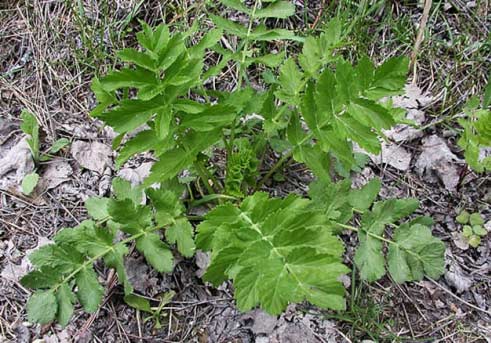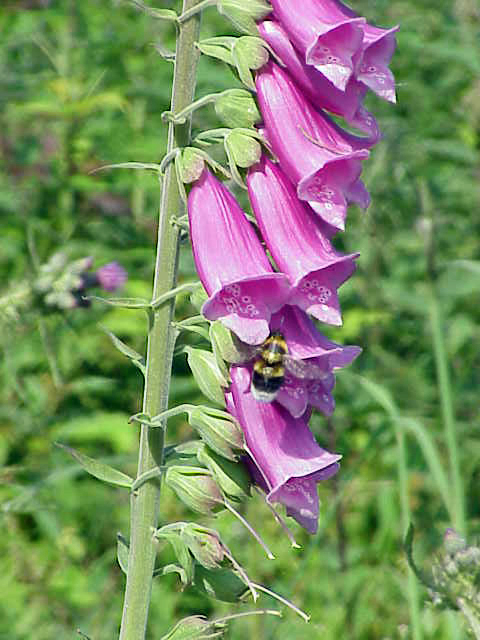Table of Contents
Ragwort
Ragwort is a poisonous weed of which Senecio jacobaeais the most common. Ragwort is a tall erect plant to 90cm (3ft) bearing large flat-topped clusters of yellow daisy-like flowers from July to October. It has finely divided leaves with a basal rosette of deeply-cut, toothed leaves. The plant is usually a biennial (living only two years and flowering in its second year) but damage to the base of the plant can make the plant behave like a perennial (living indefinitely), as new rosettes are formed. Ragwort may occur in pony paddocks, railway embankments and areas of unimproved pasture. Cattle and horses are particularly susceptible to poisoning.
Giant hogweed
Giant hogweed can grow up to five metres tall, often along footpaths and riverbanks. If the sap of the plant comes into contact with your skin, it can cause severe, painful burns and make your skin sensitive to strong sunlight. The hollow stems are an attraction to children for use as a “pea shooter”.
If you touch a giant hogweed, cover the affected area, and wash it with soap and water. The blisters heal very slowly and can develop into phytophotodermatitis, a type of skin rash which flares up in sunlight. If you feel unwell after contact with giant hogweed, speak to your doctor.
Location: Roadsides, railway embankments, riversides, hedges and fields.
Flowering period: May to September.
Wild Parsnip
Wild Parsnip is a native plant species, from the same family as Giant Hogweed, with similar toxicity. It is more common than Giant Hogweed so the risk of exposure is relatively high. It has a “dirty yellow/green” flower head and the plants are, typically, in the range of 600mm to 1200mm. It is rarely found in isolation but seems to colonise an area, with dozens or more in any one location. Exposure to the sap can cause severe blistering once it is exposed to sunlight, and splashes to the eye can cause severe and lasting damage. Effects are not usually immediate. They generally begin as slight itching or irritation, before developing into burning sensations and blistering caused by the reaction with sunlight. Therefore action should be taken as soon as possible after contact with the sap. Location: It is often seen growing near the safety barriers.
Flowering Period: In full flower from May -August
How to Identify Wild Parsnip
- Grows up to 1.5 metres tall.
- The single green stem is two to five centimetres thick and smooth with few hairs.
- Compound leaves are arranged in pairs, with sharply toothed leaflets that are shaped like a mitten.
- Yellowish green flowers form umbrella-shaped clusters 10 to 20 centimetres across.
- Seeds are flat and round.
- Wild parsnip leaves are twice as long as they are wide, broad, with teeth on the edge. One leaf will be divided into several leaflets.

‘Devil’s helmet’ plantor Monkshood / Wolfsbane
The toxic flower is known as Devil’s helmet and Monkshood. Symptoms of poisoning appear quickly after a poisonous dose is consumed and include nausea, vomiting and diarrhoea and numbness of the face. In severe cases, the numbness can spread to the limbs and muscles can weaken. It also causes hypotension, chest pain and palpitations. It can cause abnormal rapid heart rhythms and can stop the heart from beating.
Wolfsbane belongs to a group of plants which are all poisonous. The native plant, also called monkshood, has large leaves with rounded lobes and purple hooded flowers and is found throughout the UK. Accidental poisonings are very rare and people who plant it in their gardens are mostly unaware of the potential hazard. It is one of the UK’s most toxic plants and can cause the heart rate to slow which can be fatal. Even small amounts are eaten it can cause an upset stomach. Its poison can also act through contact with the skin, and open wounds. Although it’s not known how much is needed to cause death people have been known to eat the roots and survive.
Deadly nightshade
Most common in central, southern and eastern England but is also found less commonly in other parts of the UK, Deadly nightshade is a shrubby plant with purple bell-shaped flowers and glossy black berries. Dilated pupils, rash and a loss of balance are the initial signs of poisoning. Hallucinations and convulsions can also follow. Nightshade can be used to dilate the pupil and has been used as a nerve gas antidote.
Foxglove
The well-known Foxglove grows in woods and hedgerows across the UK. Its tall purple flowers are easy to spot and make it a common garden plant. If eaten it can cause vomiting and diarrhoea along with other nasty symptoms. It can also slow the heart down causing heart attacks. If contact is made it can cause irritation to the skin.
Cuckoo pint
The cuckoo pint is found growing in woodlands and hedgerows. Its poker-shaped flowers are surrounded by a green leaf-like hood with bright red and orange berries which are poisonous.The berries can cause irritation to the mouth and throat if eaten. This can lead to swelling and pain and breathing problems. It also causes an upset stomach.
Hemlock
Appearing along riverbanks and ditches Hemlock isn’t native to the UK. It grows in disturbed areas such as waste grounds and waste tips.Identified by a tall green plantwith purple spots on its stem and leaves similar to a carrot plant, it displays white flowers. If eaten hemlock can cause sickness and in severe cases can prove fatal by paralysing the lungs.

Stinging nettles
Stinging nettles are one of the most widespread plants in the UK. Covered in tiny, needle-like hairs nettles leaves are easily brushed against, breaking off the hairs which penetrate your skin, producing the familiar burning sensation, itches and a rash. Dock leaf is an effective natural remedy for the rash. If stung try to track down a dock leaf to rub on the rash. Dock leaves usually grow close to nettles.
Brown Tail Moth
The caterpillar lives with its fellows in a communal tent made of whitish silk, usually on the sunny side or at the tops of trees and bushes. When large, the caterpillars are dark brown with orangey brown hairs, with white tufts down their sides and two characteristic orange warts on the back. The adult moth is all white with a brown tuft of hairs at the end of the abdomen, hence the name.
The loose hairs can break off and cause very itchy rashes on contact with skin, as well as breathing difficulties similar to asthma if inhaled. Rashes can persist for weeks
Don’t touch and try to stay away from areas where there are lots of them. The caterpillars are a problem in May and early June, much less so at other times. If they are in the house or on the garden furniture, put on vinyl gloves, pick them up and drop them in a bucket of soapy and salty water.
If you get the rash, which is often on the hands, arms and neck, apply antihistamine cream or calamine lotion. Symptoms should subside after a few hours, but seek medical help if you are unsure, or the reaction doesn’t lessen.

















